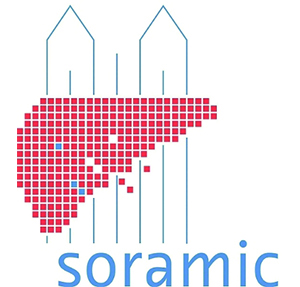
Jens Ricke, professor of Radiology at the University of Magdeburg, has announced that the palliative cohort of the pan-European SORAMIC study he co-directs with Peter Malfertheiner has reached its enrolment target of 420 patients with unresectable hepatocellular carcinoma.
SORAMIC is the first large randomised controlled trial (RCT) to compare the efficacy and safety of combining standard systemic therapy with sorafenib (Nexavar) and liver-directed selective internal radiation therapy (SIRT) with Y-90 resin microspheres (SIR-Spheres, Sirtex Medical) versus sorafenib alone in the treatment of HCC in the palliative cohort. Patients with primary liver cancer who took part in the palliative cohort of the SORAMIC study were not eligible for resection or ablation, and were not suitable candidates for trans-arterial chemoembolization (TACE).
Results of the SORAMIC study are expected in 2018.
SORAMIC, which is an acronym for “Sorafenib and Micro-therapy Guided by Primovist-Enhanced MRI in Patients with Inoperable Liver Cancer”, is an Investigator-Initiated Trial (IIT). The study consists of a diagnostic and a therapeutic part. In the diagnostic part of the study, contrast-enhanced magnetic resonance imaging (MRI) and computed tomography (CT) will be compared to determine if MRI is at least comparable to CT for identification of HCC lesions in guiding initial treatment decisions and patient management. Based on available results, there is reason to assume that Gd-EOB-DTPA (Primovist)-enhanced MRI is able to improve the accuracy of the detection of HCC lesions. If correct, this should improve the selection of appropriate treatment. In the therapeutic part, new combinations of therapeutic procedures compared to today’s general practice. The palliative cohort is for patients with locally advanced HCC, i.e. metastases in bones or lymph nodes.
SORAMIC continues to recruit for another study cohort with curative intent (comprising of radiofrequency ablation (RFA) plus sorafenib vs RFA plus placebo) and the diagnostic sub-study.
Ricke, who is director of the Clinic for Radiology and Nuclear Medicine at Magdeburg, says that, “For the past ten years, sorafenib has been the sole standard of care for treating patients with advanced HCC, or any HCC that has spread beyond the liver. We hope that the results of this large RCT will demonstrate that the combination of sorafenib and Y-90 resin microspheres may provide a new treatment standard for patients with HCC who are not eligible for surgical resection or ablation.”
Sorafenib was established as the standard treatment for patients with advanced HCC following the results of the pivotal SHARP randomised controlled trial, which demonstrated an increased median overall survival from 7.9 to 10.7 months compared to placebo.
The multi-disciplinary SORAMIC study was launched in February 2010. An interim safety analysis based on data from the first 40 patients enrolled in the palliative study cohort indicated that treatment with Y-90 resin microspheres followed by escalated dosage of sorafenib was not associated with increased toxicity compared to sorafenib alone in patients with locally advanced HCC. Patients treated with the combined therapies benefited from the same intensity and duration of sorafenib treatment as the control patients who received sorafenib alone.
Results are expected later this year for the SARAH RCT, which directly compares the efficacy and safety of sorafenib to that of Y-90 resin microspheres in patients with unresectable HCC who have failed TACE or are unable to receive it. SIRveNIB, a second RCT that has the same design as SARAH, is expected to also complete recruitment during 2016.













